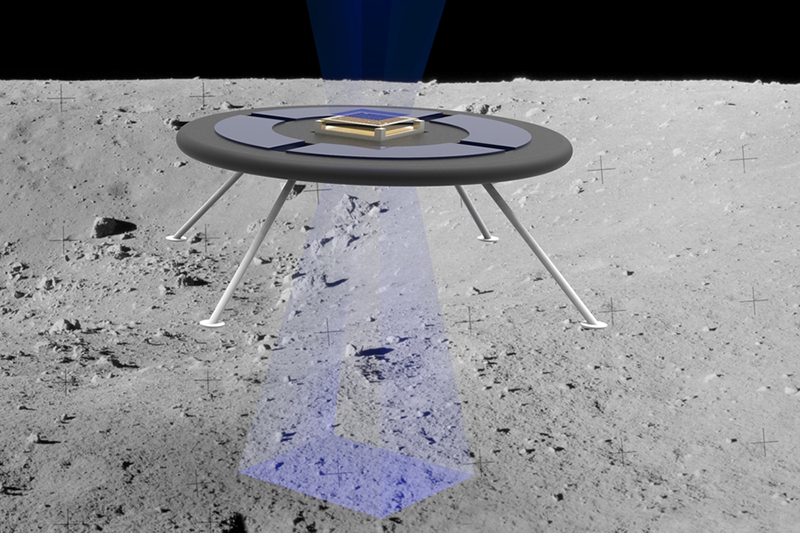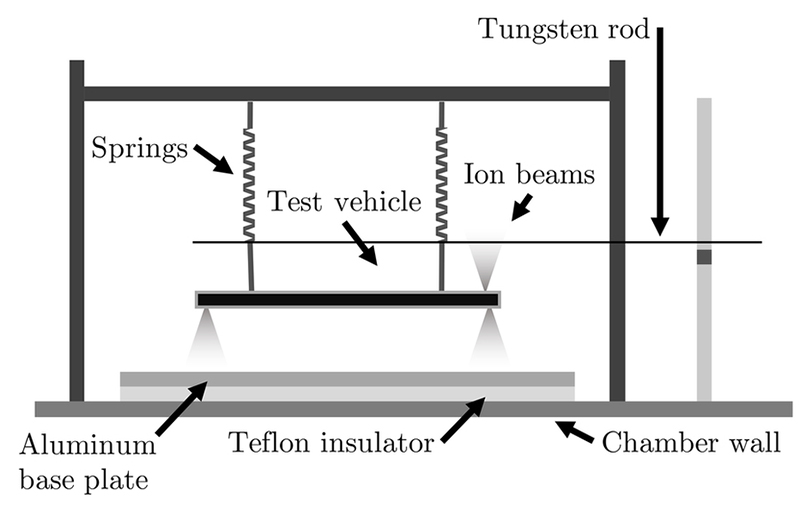Researchers have imagined a lightweight, flying saucer-style rover that can float across the surface of the Moon and other airless planetary surfaces such as asteroids.

The 'flying saucer' would be powered by the electric field that builds up due to direct exposure to the Sun and its surrounding plasma. In the absence of an atmosphere, this solar exposure creates a charge that's able to levitate dust more than a meter (more than three feet) above the lunar surface, and it could be possible to harness this energy.
The rover would be made of a material called Mylar, which naturally holds the same charge when hit by the Sun's rays. Tiny ion beams would be used to both charge up the vehicle and boost the natural surface charge, counteracting gravity.
 How the rover might look. (MIT)
How the rover might look. (MIT)
"With a levitating rover, you don't have to worry about wheels or moving parts," says aerospace engineer Paulo Lozano, from the Massachusetts Institute of Technology (MIT).
"An asteroid's terrain could be totally uneven, and as long as you had a controlled mechanism to keep your rover floating, then you could go over very rough, unexplored terrain, without having to dodge the asteroid physically."
The ion thrusters, called ionic-liquid ion sources, are small nozzles that have previously been used to propel satellites through space. The actual fuel is molten salt, which when hit with an electric charge, shoots out of the nozzles as a beam.
Here, the charge is transferred to the surface below to supplement its own natural charge. Mathematical models confirmed the idea could work, and would provide enough of a thrust to get the gliding rover off the ground.
In a lab experiment using ionic-liquid ion sources to create an electrostatic force, the team was able to get a small, palm-sized vehicle weighing about 60 grams (2.1 ounces) to levitate. The amount of force required would depend on the size of the planetary body.
 The test setup. (MIT)
The test setup. (MIT)
"This kind of ionic design uses very little power to generate a lot of voltage," says Lozano. "The power needed is so small, you could do this almost for free."
When you're packing for a trip to the Moon (or anywhere else in space), it's important to pack as light as possible – heavier loads need more fuel and cost more money to launch. In this case, the proposed probe would be sourcing a lot of its power naturally.
The current analysis only proves that levitation is possible. In order to get the rover up to a respectable height, further modeling is going to be required, the researchers say – but the underlying calculations check out.
Large asteroids like Psyche could also be explored by this kind of rover, giving experts a way of examining these rocky bodies up close with a vehicle that isn't fazed by uneven surfaces and which can draw some of its power from natural electric fields.
"We think of using this like the Hayabusa missions that were launched by the Japanese space agency," says Oliver Jia-Richards, a NASA Space Technology Research Fellow from MIT.
"That spacecraft operated around a small asteroid and deployed small rovers to its surface. Similarly, we think a future mission could send out small hovering rovers to explore the surface of the Moon and other asteroids."
The research has been published in the Journal of Spacecraft and Rockets.





No comments:
Post a Comment